
Lot 128
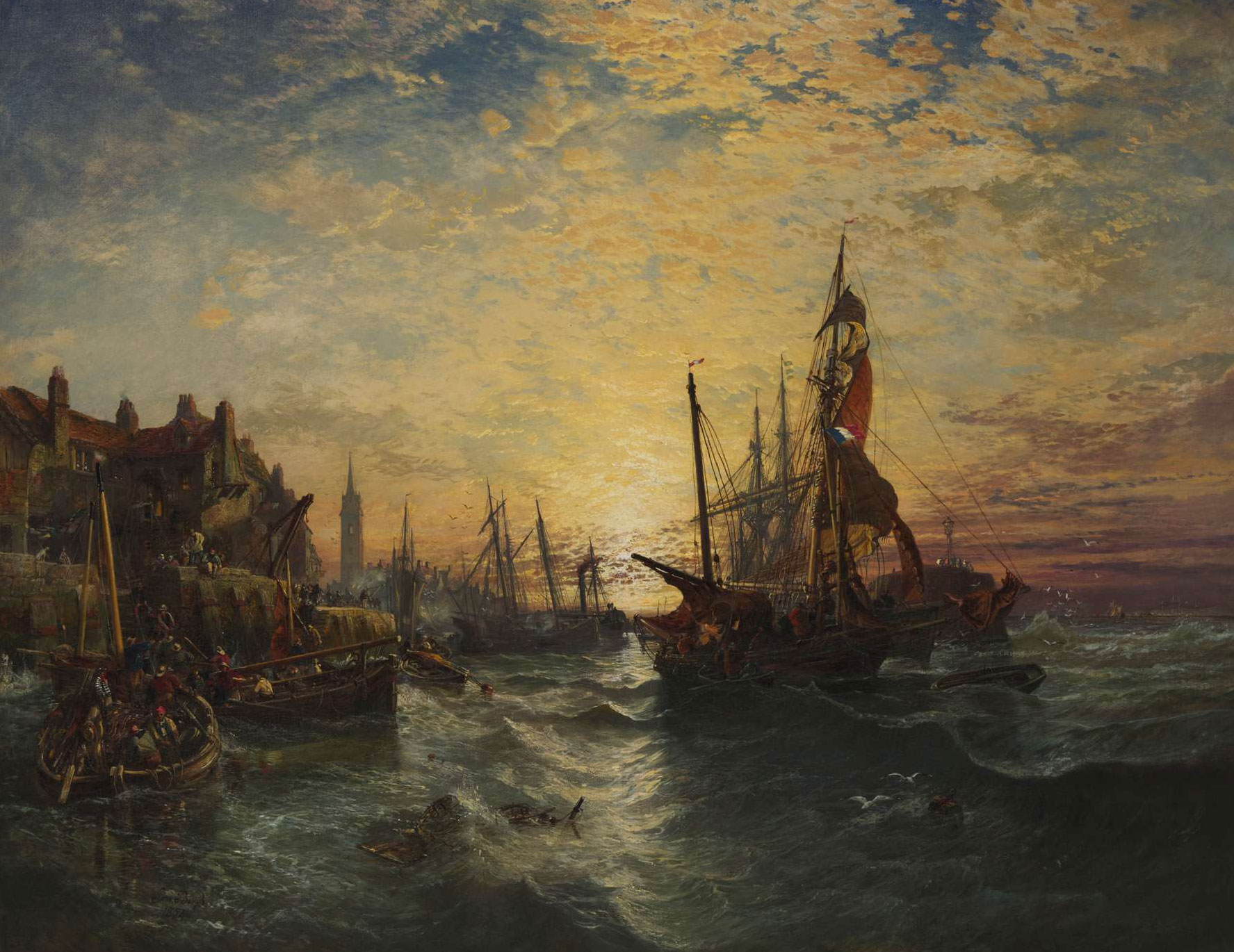
SAMUEL BOUGH R.S.A. (SCOTTISH 1822-1878)
WEST WEMYSS HARBOUR - A GUSTY DAY
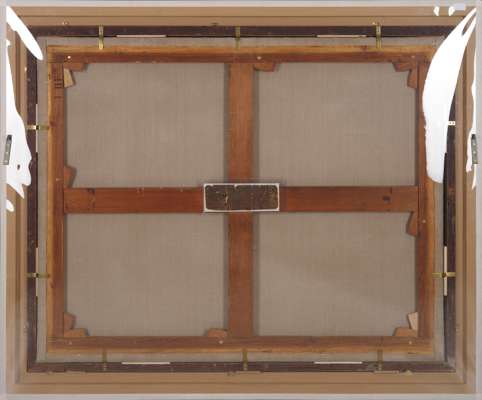
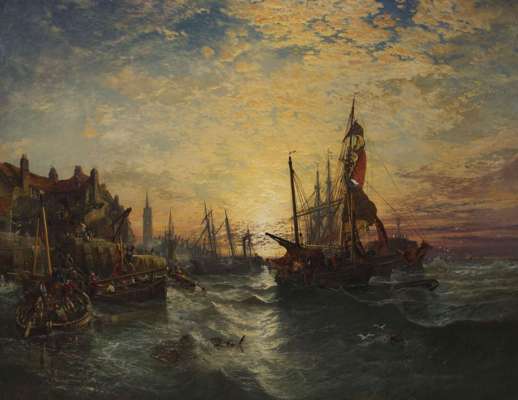
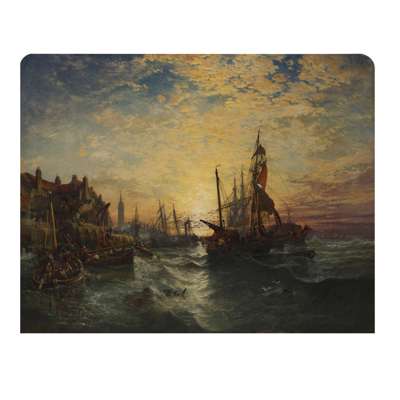
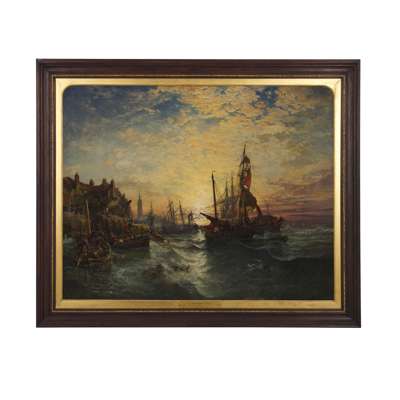



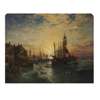


Scottish Paintings & Sculpture
Auction: Evening Sale | Lots 112- 206 | Thursday 05 June from 6pm
Description
Signed and dated 1854, oil on canvas, arched top
Dimensions
101.5cm x 127cm (40in x 50in)
Footnote
This painting is probably the one exhibited at the Royal Scottish Academy, Edinburgh, in 1856 under the same title (no.199).
‘Bough’s balance of realism with the scenic makes his pictures resonate with the viewer - the familiar and the extraordinary combined’.
Samuel Bough: 1822-1878, The Fine Art Society, Edinburgh, Thoughtwell Ltd.,2014, p.5
Like a stage curtain, the sun rises over West Wemyss to reveal the aftermath of a storm. The wind is still high, and the boats roll on the churning sea, which glints in the low light. The composition’s theatrical quality is furthered by Bough’s signature technique of painting ‘into the sun’, so that much of the foreground is cast into dramatic shadowy silhouette under the pinks, blues and golds of the lightening sky. So dark is the water that we, like the sailors, must scan the waves to assess the damage incurred overnight: inspection reveals the floating fragmentary remains of sailboats and barrels. Yet life must go on: to the left, a cluster of fishing boats deliver the morning catch to the waiting hands on the harbour, to be sorted and carried to markets inland.
West Wemyss is situated on the north shore of the Firth of Forth, and takes its name from the Wemyss family, who have been resident in the area since the twelfth century. From the seventeenth century onwards West Wemyss harbour served as a major entrepôt for the exportation of coal mined on the family’s estate, and the importation of wood, flax and iron. The honing of steamboat technology over the course of the nineteenth century signalled the beginning of the end of the economic viability of sail-powered boats. Bough’s portrayal of a harbour crowded with sailboats, their intricate masts and rigging rendered with affectionate exactitude, may be somewhat romanticised, yet on the far-right horizon he has painted a chugging Wemyss-bound steamboat, heralding the advent of industrial modernity.
A fervent admiration for J.M.W. Turner’s maritime paintings led Bough to specialise in harbour scenes from the mid-1850s onwards. Indeed, he would on occasion compose pictures from an identical vantage-point previously used by Turner. Bough was a self-taught artist and likely found it instructive to paint and draw inspired by Turner exemplars (for example in 1837 Bough, aged only fifteen, painted Berwick-upon-Tweed from the same vantage point as Turner had. A further version painted in 1863 is in the National Galleries of Scotland (NG 2121)). Bough’s reverence for Turner might account for certain similarities between West Wemyss Harbour and Turner’s 1840 masterpiece The Slave Ship (Museum of Fine Arts Boston, 99.22), which is rendered on a comparably monumental scale of 91cm x 123cm. Bough’s painting does not set out to bear an equivalent political charge to Turner’s; instead, it is as if Bough felt enticed by the technical challenges presented by the rosy sky, rolling sea, and narrative dynamism achieved by the master of Romantic painting, but determined to interpret these components in his own distinctly Scottish style. The expert animation of the harbour and sky in West Wemyss Harbour demonstrates this painting’s importance, underlining Bough’s prowess as a maritime painter which is arguably unparalleled amongst his Scottish contemporaries.









